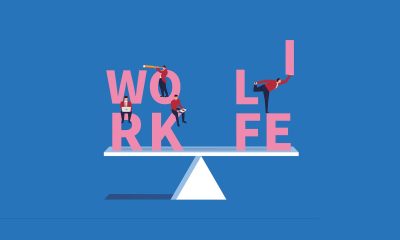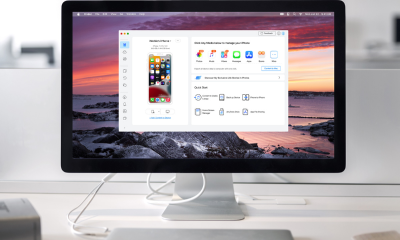Personal Finance
Many student loan borrowers unsure how they’ll restart payments after pause ends, survey says

According to Fidelity’s College Savings & Student Debt study, six in 10 high school students say they won’t be able to afford college without the help of student loans, and more than one-third (36%) don’t know how long it will take to pay them back.
Additionally, the study results reveal 65% of college students taking advantage of the current federal payment pause say they have no idea how they’re going to start repaying their loans once the emergency pause is lifted this fall.
“These findings are not as much a surprise as they are a concern,” says Jesse Moore, head of student debt at Fidelity Investments. “This October will be the first time in over three years that most federal borrowers make a student loan payment, and a lot has changed in three years. These people have bought homes, started families, changed jobs and all have felt the impacts of inflation.”
HOW TO NEGOTIATE A BETTER COLLEGE FINANCIAL-AID PACKAGE
He noted in particular the recent graduates who are entering the workforce and some of whom are putting their budgeting skills to the test for the very first time.
“In the U.S., an average monthly student loan payment is well above $400, so it’s not surprising to see so many borrowers express concern about adjusting their budgets when they already feel like they’re living paycheck to paycheck to make ends meet,” Moore tells FOX Business.
What can students do to better prepare themselves to begin repayment?
According to Moore, with student debt payments returning this October, he says there are a few steps borrowers can take to prepare.
Get organized
Most people don’t know where to start, so getting all loan information, interest rates and more is a great first step, Moore says.
Test your budget
Moore recommends putting a plan in place and testing your budget to ensure you’re working with a realistic budget and that you’re comfortable with how much you’re saving and spending.
7 MONEY MOVES NEW COLLEGE GRADUATES SHOULD BE MAKING
Talk to your employer
Get up to date with what benefits are currently available to you or will become available in the near future, he suggests.
Moore also shares that while it’s concerning to see so many borrowers concerned about payments resuming, he believes it’s encouraging to see many employers stepping up to help support their employees with student debt benefits.
“Data shows that 55% of employers in the U.S. are planning to offer or already offer some sort of student debt benefit,” Moore tells FOX Business. “Fidelity has resources to help both borrowers and employers navigate the changing landscape as we approach payments resuming this October.”
Are there proactive ways that college students can do now to minimize debt?
There are options for students and their families.
“Every dollar saved is a dollar less borrowed and college savings accounts like a 529 have become even more flexible in recent years so college students can use tax-advantaged savings for qualified expenses like books, rent, supplies and more,” says Tony Durkan, head of 529 college savings at Fidelity Investments.
Additionally, Durkan says, the Fidelity study shows Gen Z is thinking more strategically about college, however, there’s still an opportunity for them to brush up on their financial knowledge.
“Simply knowing how much debt you’ll graduate with and what the payments will look like after graduation can help college students plan accordingly when looking for jobs after graduation,” he adds.
Of note, Fidelity has resources and tools available to help students and families calculate the true costs of college and manage the potential debt they may have afterward.
Read the full article here

-

 Side Hustles6 days ago
Side Hustles6 days agoHow to Create a Unique Value Proposition (With Tips & Examples)
-

 Side Hustles6 days ago
Side Hustles6 days agoThe DOJ Reportedly Wants Google to Sell Its Chrome Browser
-

 Investing5 days ago
Investing5 days agoAre You Missing These Hidden Warning Signs When Hiring?
-

 Make Money5 days ago
Make Money5 days ago7 Common Things You Should Never Buy New
-

 Investing7 days ago
Investing7 days agoThis Founder Turned a Hangover Cure into Millions
-

 Investing2 days ago
Investing2 days agoThis All-Access Pass to Learning Is Now $20 for Black Friday
-

 Side Hustles3 days ago
Side Hustles3 days agoApple Prepares a New AI-Powered Siri to Compete With ChatGPT
-

 Passive Income2 days ago
Passive Income2 days agoHow to Create a Routine That Balances Rest and Business Success


















